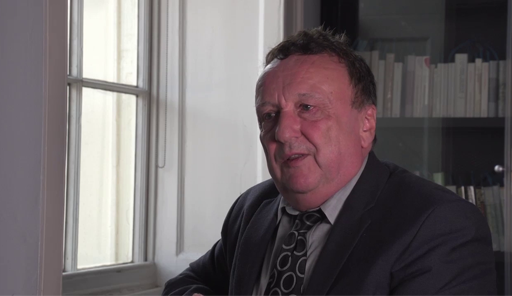1 From the 1700s to the mid-twentieth century
The Industrial Revolution, which started in the UK in the late 1700s, is the name given to the process in which society changed from being primarily agricultural to one where people migrated to live in towns and worked in factories.
Before the Industrial Revolution there were many jobs that could be done by people with learning disabilities, such as scaring crows, caring for animals and running errands. First, listen to historian Simon Jarrett in Video 2 who argues that society was far more inclusive of people with learning disabilities in that period.

Transcript: Video 2
According to Simon, people in the 18th century had different ideas about intelligence. They believed that there were different types of intelligence, all of which were equally valuable. They believed that they could identify a person they called an ‘idiot’ by what he or she looked like, but that didn’t mean s/he was shunned or shut away. For example, they were less a figure of fun than the clever wealthy man who slipped on the ice while reading his thermometer because he lacked common sense, in Gillray’s cartoon (Figure 1).

However, as the Industrial Revolution made paid work more mechanised, so people with learning disabilities found it increasingly difficult to fit into the workforce. It was this that made them into a ‘problem’.
Activity 1 Learning disabilities timeline – 1700s to 1950
a.
1813
b.
1883
c.
1913
The correct answer is c.
a.
True
b.
False
The correct answer is a.
a.
15,000
b.
25,000
c.
55,000
The correct answer is c.
You have just covered two centuries in a very short time! To find out what some of these changes meant for people, you will be following the stories of two women, Mabel and Bernie, both born in the mid-twentieth century. In the next section you will learn more about the history of learning disability institutions.
